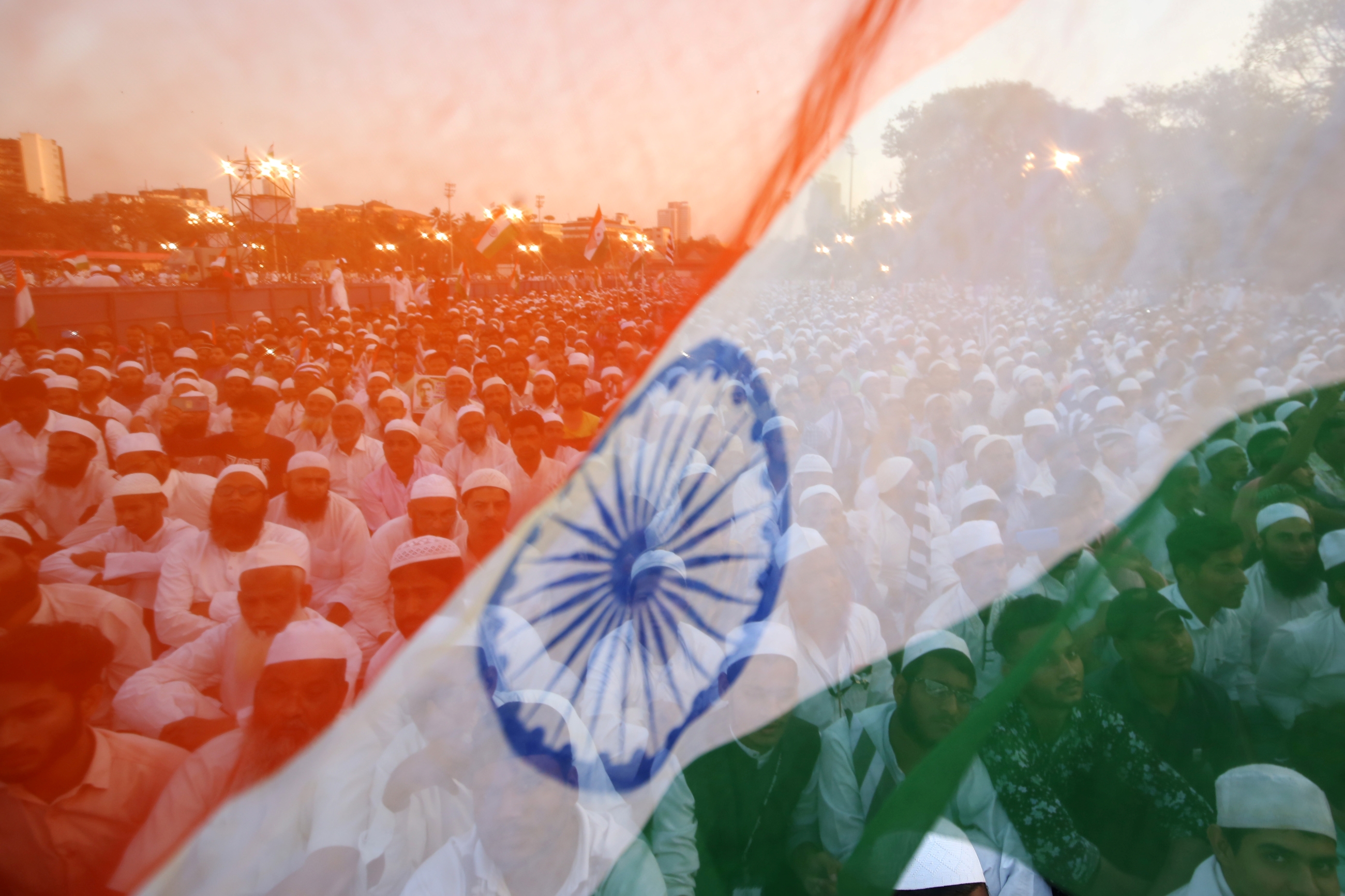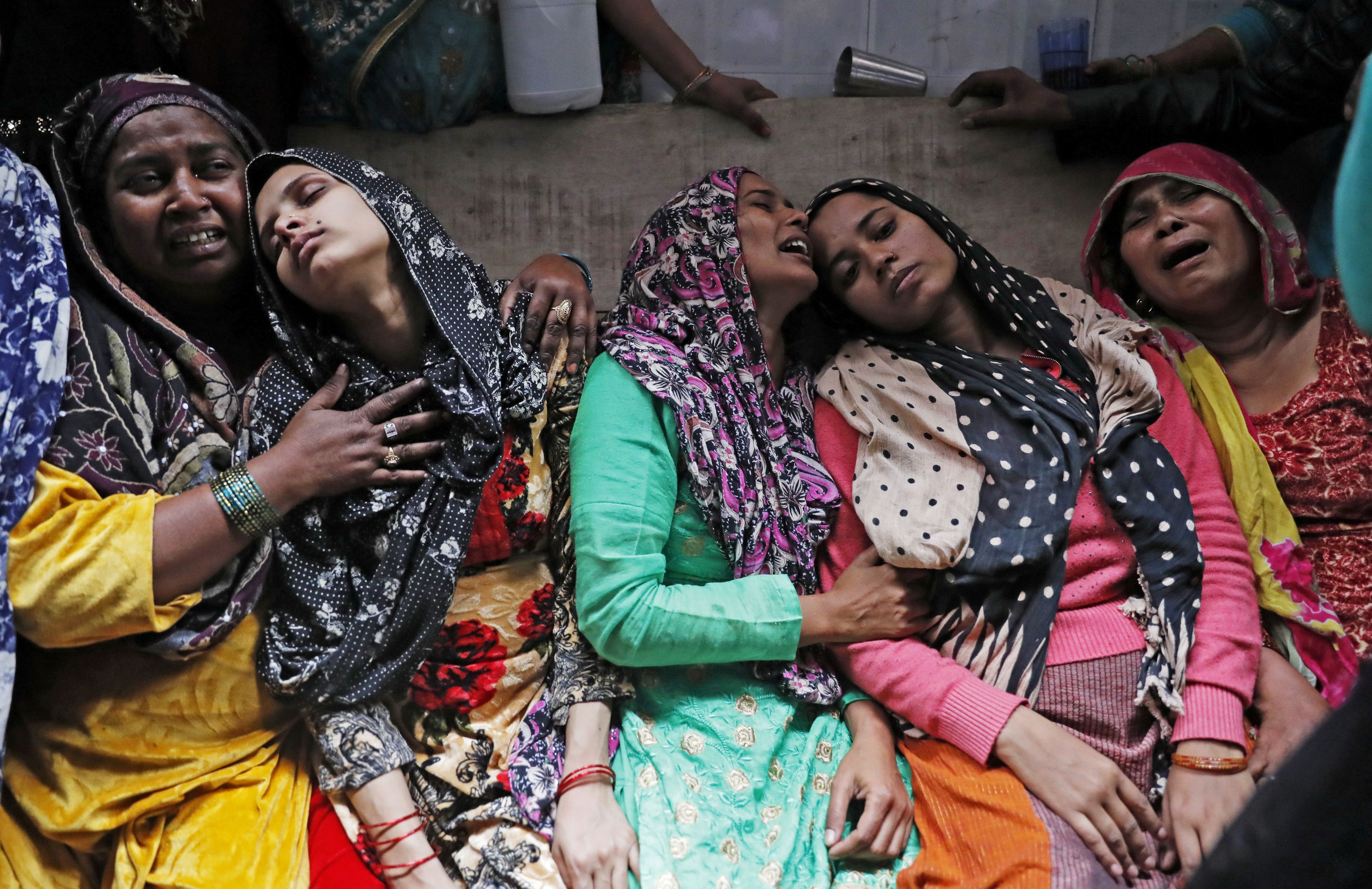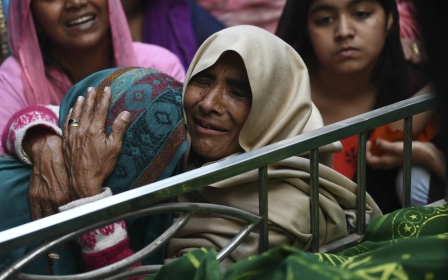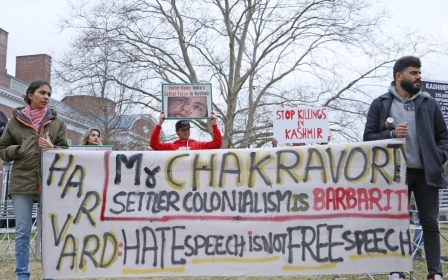The Delhi pogroms and the case of the disposable Indian Muslim

They came to the hospital with gunshot wounds, stabbings, acid burns and mutilated genitalia.
Homes and mosques were torched, businesses razed. Those Indian Muslims who resisted had acid thrown at their faces. Others were shot at. The Hindu mobs came in numbers, carried saffron flags, and chanted "Jai Shree Ram" - a battle cry for a Hindu India.
Even as the violence subsides a week after the anti-Muslim riots, and an uneasy calm prevails over parts of Delhi, the embers left behind from the week-long carnage are still searing.
At last count, 46 lives have been lost and 200 others had been injured in some of the worst state-sanctioned violence, targeted against India’s Muslim community, in decades.
Coming for the Muslims
This wasn’t violence of a languid kind; sporadic or disarranged. Mobs walked the streets with weapons towards Muslim areas to inflict harm. If there were clashes between religious communities, it was a question of trying to stay alive.
This wasn’t a violence of languid kind; sporadic or disarranged
At first, it was understood that the mobs were targeting protesters conducting sit-ins over the implementation of the Citizenship Amendment Act (CAA) that discriminates against Muslims (the bill provides citizenship to non-Muslim illegal immigrants from Pakistan, Bangladesh and Afghanistan).
But it soon became an all-out assault against Muslims.
They were targeted in their homes, at mosques, even on the street. One Muslim family had to hide on their roof for more than 14 hours as rioters burnt their house.
Raveesh Kumar, spokesperson for the ruling BJP party, has predictably denied that the Indian Prime Minister Narendra Modi's government had inflamed religious tensions or had any role in the riots, even as the police either arrived late, or just looked on, without interference.
Hemani Bhandari, a journalist from The Hindu who covered the violence at the beginning of the week, said on Friday that one man belonging to a Hindu mob told her: “If they [Muslims] want to stay in Delhi, then they have to go live the way we do,” in reference to the sentiment that first the protests need to end, and second, Muslims will need to submit if they didn’t want to perish.
Though the madness of the past week has all the hallmarks of a state-sponsored pogrom against Muslims, the audacity to pull it off didn’t come without the consent of the larger Indian public.
In other words, as abominable as the violence might be to the ordinary Indian, this is not a society at odds with violence - of all kinds - inflicted on Muslims.
Eternal burden
This is not a country that has ever allowed critical Muslims to show open dissent to their condition. The only voices that have ever been allowed are those who are insufferably loyal, nationalistic toward the state. If any Muslim has succeeded in politics, sports, arts and culture, it is only after he has proven his credentials as a loyal, jingoistic supporter of the state.
Indian Muslims carry the eternal burden of distinguishing themselves from 'bad Muslims', 'traitors' and 'invaders' that the state has projected on to the community
Indian Muslims carry the eternal burden of distinguishing themselves from "bad Muslims", "traitors" and "invaders" that the state has projected on to the community.
This has meant endless discrimination when it comes to accessing housing, jobs or opportunities. After the September 11 attacks, India borrowed the terrorism lexicon to quell any semblance of Muslim critical thought.
The Supreme Court’s decision in November to appease majoritarian sentiment to rule that that the site of the Babri mosque in Ayodhya, demolished in 1992 by a Hindu nationalist mob, would be the site of a new temple; the silence over the recent arrest of academic Shajeel Imam held on charges of sedition because he "stood by the principle of the rights of Muslims as humans, beyond the dehumanisation that the state reduced them to" - as his friends described it - is precisely the type of consensus the right-wing has thrived on in achieving its genocidal intent.
The problem is that the story of India’s secularism has always been a forced-fed narrative.
A Hindu nation?
As writer Badri Raina argues, many within the original leaders of post-independent India and today’s main opposition, the Congress Party, "believed at heart that, Indian social pluralism of centuries notwithstanding, India was at bottom a Hindu nation".
“What is to explain the fact that no attempt has ever been initiated, not to say carried out, by the Congress organisation, to dent or alter the socialized prejudices of India’s police forces?” Raina wrote back in 2008.
When the pogroms took place in Gujarat in 2002, in which more than 1,000 people, mostly Muslims, were killed, it became an open secret that Modi, who was the chief minister of the state at the time and always denied any wrongdoing, had allowed the anti-Muslim riots to take place
Nilanjan Mukhopadhyay, who wrote a biography of Modi, says that Muslims in Gujarat were so terrified following the events of 2002, they even steered clear of suggesting they faced discrimination. Under Modi, relations between Hindus and Muslims transformed dramatically, from the seemingly benign to the grotesque.
In some villages and towns in Gujarat, Muslims stopped cooking non-vegetarian food in their own homes out of social pressure from Hindus. Others changed their names to Hindu ones to find work.
Mukhopadhyay narrates how one man told him about what they did to a Muslim man who wanted to marry a Hindu woman. “We beat him in a way that no Muslim will dare to look at a Hindu woman again. Only last week, we made a Muslim eat his own waste - thrice, in a spoon.”
Today, when the police stand by and watch the mobs burn Muslim properties and bodies, many of the same journalists, economists, political scientists that gave their liberal consent to the demonisation of Muslims are reinventing themselves as purveyors of truth and justice.
Instead of feigning disbelief at the crumbling of its secular credentials, now would be as good a time as ever to acknowledge that it is the demonisation and violence against Muslims that has been a mainstay of the Indian union.
The views expressed in this article belong to the author and do not necessarily reflect the editorial policy of Middle East Eye.
Middle East Eye propose une couverture et une analyse indépendantes et incomparables du Moyen-Orient, de l’Afrique du Nord et d’autres régions du monde. Pour en savoir plus sur la reprise de ce contenu et les frais qui s’appliquent, veuillez remplir ce formulaire [en anglais]. Pour en savoir plus sur MEE, cliquez ici [en anglais].






